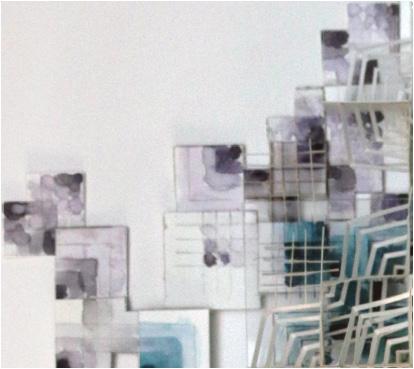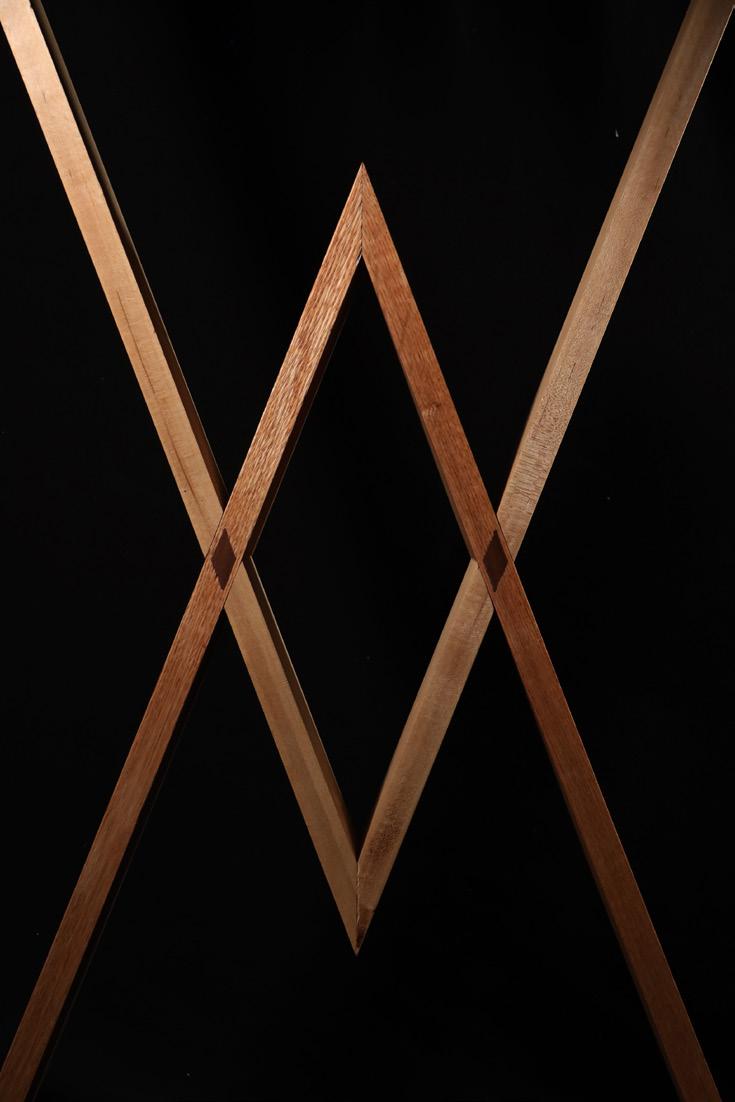SABRINA PETTINATO architecture portfolio

















Design Studio Fall 2022
Matthew Hutchinson
Design Studio Spring 2022
*Featured in CAED X-Gallery

Design Studio Fall 2021
*Recieved Most Inspiring Student Project Award
This project uses a material, structural, and organizational framework to unify existing buildings with new construction and create a cohesive tectonic throughout. It also seeks to utilize the unique properties of mass timber to interlock and layer both materials and spaces. In the process of replacing parts of the existing, I uncovered an underlying organizational system that I slightly edited to accommodate for certain programs. The

layering of program in different densities creates public areas towards the bridge and private by the parking lot. From there, wooden panels can be filled in between, over, or onto the Glulam to determine interior vs exterior, public vs private, or density of sound and light within a space. The layering of material and spaces allows for the new to conform to the existing, organization of programming, and better control of the density of spaces.
Scale: 1/32” = 1’-0”
Scale: 1/32” = 1’-0”



Scale: 1/32” = 1’-0”

The wood can adapt physically at different scales such as dovetailing between brick columns, finger locking into individual blocks, and interlocking with itself to create furniture or circulation. By using a layered approach, the material can also adapt to achieve certain densities of spaces, sound, and light.


I explored the tectonic of how the material joins together , creates circulation , and controls enclosure through physical model making. I started with the three axes of the Cartesian Coordinate system to arrange 6 cubes together with a good variation of outside/inside, circulation, and public/ private.
From there I created an existing form that gives the potential for different moments of connection with the new. The wood attatches inbetween or onto the walls and floors. Individual pieces of wood also stack together in layers at different lengths and create perforations. Working with wood allows for versatility with the size, function, and assembly.






The public is drawn in from a digital gallery and then led up the cascading platforms or around the side to the main entrance. The other half of the site filters people from the trail through the middle of the project to an extension of the trail. Or students and faculty can enter from the parking lot to access spaces for learning and producing that work towards performing . (Seen in following plan)





The goal for this project was to create an addition onto the Florence University Humanities Library that fit well in the site by using the existing building and emulating Italian styles such as a loggia, courtyard, and the pitched roofs, but in a contemporary way. The form was generated from the extension of lines from the site and the movement of people. Looking at the movement diagram to the right, it shows how students and the general public
*Most Inspiring Student Project Award
circulate on the ground floor. The two entrances into the courtyard allow for people to enter the building from either street. Students who need direct access to the library can go through the narrow cut away from the existing building which creates a feeling of compression and expansion. The plaza is designed for public areas in the front and transitions to more private towards the library or on the above floors.







Entryway Section


North East Elevation
North West Elevation





New glass and existing arches detail
Two technical drawings show the connections between the old and the new. Glass was attached onto the arches to enclose part of the library courtyard. The right shows how the stone panels attach to the existing and how the new roof meets the old one in the newly created courtyard.



Courtyard Wall Section










As for materiality, gold panels envelop the upper floors to still respect the surroundings through color and reflection, but separating itself as a new building. On the ground floor, the stone from the piazza continues up onto the wall as panels. This almost creates a feeling of being permanent in the site like it belongs there. The panels connect easily to the existing walls to keep most of the original shape of the building , give a more modern feel , and reduce the amount of waste and CO2 emmission




The idea behind this project is designing a building in the quarry of Kelleys Island that can adapt to environmental and ecological change around it. We came up with five different scenarios of what could happen to Kelleys Island in the next 30 years. The three we chose were: Green Island, Resort Island, and Kelleys Island. Green Island represents Kelleys Island if it turned into a National Park. Resort Island focuses on tourism as the main source of income.
Kelleys Island becomes more stable with its focus on both tourism and its winery business. To begin, we created a grid in the quarry. Then we wrote out a recipe to dictate when and where land would be filled in the quarry. On Green Island the building changes from a storage hanger to a visitor center. The building stays as an Event Center on Resort Island. Within Kelleys Island the building starts as a Community Center and adapts as a Mall/Community Center.
Partner: Jennifer Callewaert - Fall 2021








Looking at the land in each scenario, we chose to place our building on the edge of the quarry in the NorthEast because it can be influenced by three different sections of land (seen in the grid). Also having half of it on the edge of the quarry gives stability , and the strip that penetrates through the middle connects the quarry to the rest of the island
Based on the movement of people around the building, we arranged the main entrances in the two South corners of the building. Then we designed our roof to influence the organization of the floors below . We did this by creating a cheveron shape to connect the two South entrances. Then repeated that pattern and designed a gable roof framing held up by wooden columns.



We used our roof system to dictate the organization of the floors below. The extension of our rafters past the valleys of the chevrons allowed for the columns to be placed on the ends of the rafters, creating a space called the inbetween


The basic plans show the in-between repeated in the cheveron shape within the placed columns. It gives stability to the building , contains permanent circulation , and gives opportunity for closed space .





Due to the continuous change of land surrounding the building, we decided the building should have control on where and when the land can or cannot enter the building . This decision led us to this sliding panel system, which introduces large openings for both people and land. The system is made of vertical tracks that run from the ground to the top of the third floor. Frosted glass panels can slide up and down along the notches of the tracks. The grid, inbetween, and sliding panel system are the fundamental strategies that define how our project can respond to change around it.




















The form is embedded in the hillside, moving around the trees to feel inclusive of its surroundings. It is centered around three words: connect, observe, and educate. People can connect in two ways. One is by gathering with others at the steps under the trees to talk about the injustice in the past and present. Or they can connect with the five paths that represent the five significant days of May 4th. These are made out of aerogel, contained inbetween two pieces of glass, which represents the foggy atmosphere from the tear gas to make people feel more immersed in the environment from that day.
Each path leads to four overlooks that relate to the four victims. Here, the cantilievers point towards a significant area for people to observe, which can be seen in the site plan. The final event takes place under the cantilievers and inbetween the cutout landscape. Important information about May 4th will be engraved on the wall so people can go here and become educated on the events of May 4th. From the three activities, materiality, and location, anybody who interacts with the memorial feels immersed in the history and environment of May 4th.
Longitudinal Section(B)
Cross Section(A)

Perspective Renders





Vray + Photoshop





The material resembles the fog from all of the tear gas on Memorial Field. It is contained inbetween two pieces of glass so people can walk over it.


The base of the model is made out of reflective concrete to reflect its surroundings back towards the viewers to remind them of the events that happened in this area and make them feel more immersed in the environment.

The project deals with how our model kit parts interact and give a singularity to the model kit through rotating, extending, and overlapping each other. The enlargement of scale from model kit to building is allowing the user to experience the toy-like forms at a much larger, building scale. Once
*Featured in CAED X-Gallery
the model kit reaches its largest scale, its posture leaves residual effects of its past movements and the enlarged model kit details begin to challenge people’s perception of the scale of the project. This process has given us the opportunity to translate model kit tectonics to architectural relationships.
Partner: Logan West - Spring 2021




We rotated specific parts of our model kit downward to elevate the school from the urban landscape of the city. This generated an underbelly to the project which has created a grand public space at the scale of the city at the ground level. This semi public space acts as an extension of the existing ground that flows beneath the school. This space is intended for families and school events conveniently to occur without bringing the public up into the school.




By using our system of rotating parts, we were able to use the joints to rotate and extend a canopy at the top side of the model kit. The loose fit connections that are created from the joints produce spaces between the parts where light can filter through the project. These vertical beams of space allow for natural light to enter and flood throughout the interior of the project.






Second Floor
Third Floor




I have a strong passion for wood working, or anything related to fabrication. Working in the FabLAB has given me a place to express my creativity in ways I am unable to in my classes, shown me the building process of how things are made, and improved my making skills. This project shows my
ambition when it comes to learning new things while trying to achieve a high level of craft. I challenged myself by making joints I have never made before. Two pieces of maple on each side are extended from the table top, slotted into oak legs, and meet together at a spliced joint.










